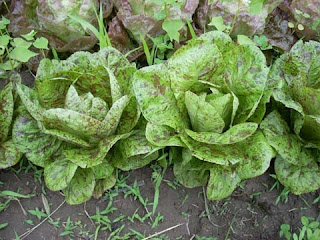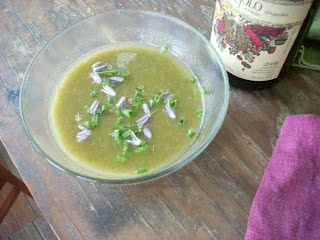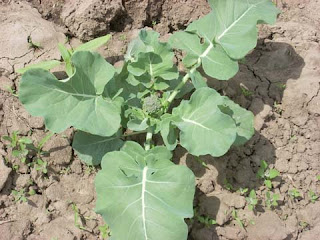This week’s blog is one that we had always hoped to be able to write; a full share that includes not just fresh Spring vegetables, but also fruit. Enough to make a whole dish.
For the past week we have tried strawberries several ways.
- By themselves, soaking up the Vitamin C and anti-oxidants;
- with homemade yogurt and local honey, the perfect 100 Mile Diet dessert;
- as strawberry jam, so they can be enjoyed for many a breakfast; and
- frozen, for future uses to be determined.

For the adventurous among you, making strawberry jam is a must. There are many ways to do it. The simplest is to buy some Sure-Jell and follow the instructions on the package. Another is the old fashioned way that involves only strawberries, sugar and a little water. That is the method we used (see below), straight from the classic book Larousse Gastronomique. I have added some hints to help “translate” this old recipe.
You can also check out the MU Extension publication on jellies and jams.
Strawberry Jam (Confiture de Fraises)
The strawberries must be selected for perfect unblemished ripeness. It is advisable not to wash them unless absolutely necessary. In this case they should be well drained and dried before cooking.
2 lb strawberries (net weight), 1-1/2 lb sugar, 6 tbsp water.
Dissolve the sugar in a pan with the water and cook to ball stage (240º F), skimming well.
Put the strawberries, stalks removed, in the dissolved sugar. Keep the pan on the side of the stove for a few minutes (I cooked them together for 5 minutes). When the juice from the strawberries has thinned the sugar to a syrupy consistency, drain the fruit through a silk strainer (a colander is fine). Cook the syrup again in the pan until it reaches 240 ºF once more (I used 230º F to make sure things didn’t turn to hard candy. This step takes several hours). Put the strawberries back in the pan and cook for 5 to 6 minutes, to the point at which the jam reaches the jelling stage (It actually took another 45 minutes or so to reach this stage. It is the tricky part). Finish in the usual way (ie, 15 minute hot water bath to seal jars).
The Rest of the Share
Lots of good greens and roots fill out your share this week. For those new to the shares, you can cook the greens from both the Hakurei turnips and baby beets. If you are making greens, a mix of the two, along with what ever other greens you have, can be quite tasty. Check out the greens recipe section of the website. Don’t try cooking the radish greens though, they are a little fuzzy and tough.
Bulk List
| Item | Member Cost | Non-Member Cost |
| Lettuce | $2.00/head | $2.50/head |
| Radishes/Hakurei Turnips | $1.75/bu | $2.25/bu |
| Tat soi or yukina savoy | 2.00/head | $2.50/head |
| Cilantro | $1.50/bunch | $1.75/bu |
| Dill | $1.50/bunch | $1.75/bu |
| Strawberries | $4.00/qt | $5.00/qt |








 Finally some gorgeous spring weather after so much of the cold and muddy. Storms were all around us last week although we missed the deluge that others have seen. The paths we spaded last fall to allow excess water to drain out of the growing beds seem to be working. One place that we hadn’t spaded was in the potato beds, so Thursday we bailed the potato trenches by hand. After moving literally a ton of water, they are now drying out. All of the spring crops are in the fields but growing slowly with the cool temps. Looks like our latest planting of peas rotted, but we’ve got four other beds growing. Now is the time when we begin to fret about whether all of our winter planning combined with the vagaries of climate will lead to the season starting on time. With three weeks away from our planned first distribution, the mood at times is tense. So far, we think we’ll make it. In the meantime, we continue with the spring chores. This week we thinned the direct seeded crops: arugula, beets, chard, rapini, radishes, and turnips.
Finally some gorgeous spring weather after so much of the cold and muddy. Storms were all around us last week although we missed the deluge that others have seen. The paths we spaded last fall to allow excess water to drain out of the growing beds seem to be working. One place that we hadn’t spaded was in the potato beds, so Thursday we bailed the potato trenches by hand. After moving literally a ton of water, they are now drying out. All of the spring crops are in the fields but growing slowly with the cool temps. Looks like our latest planting of peas rotted, but we’ve got four other beds growing. Now is the time when we begin to fret about whether all of our winter planning combined with the vagaries of climate will lead to the season starting on time. With three weeks away from our planned first distribution, the mood at times is tense. So far, we think we’ll make it. In the meantime, we continue with the spring chores. This week we thinned the direct seeded crops: arugula, beets, chard, rapini, radishes, and turnips.

